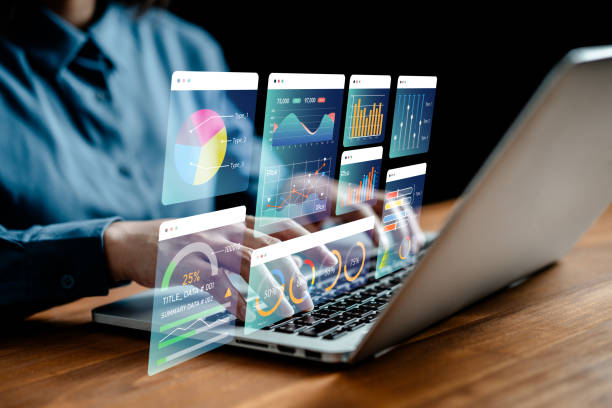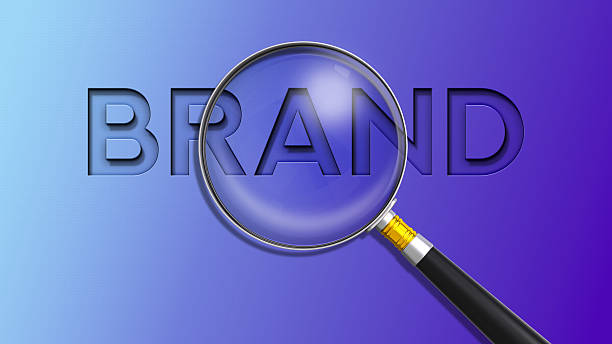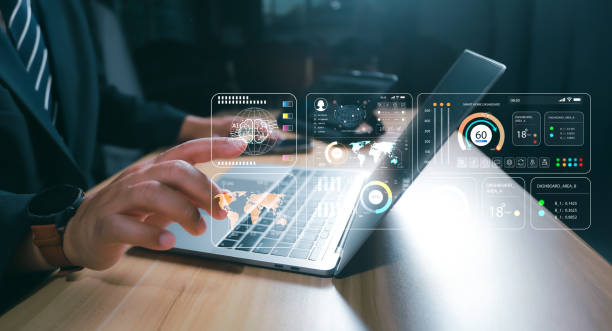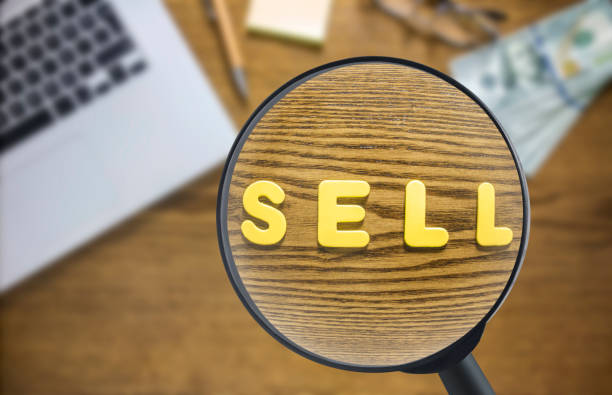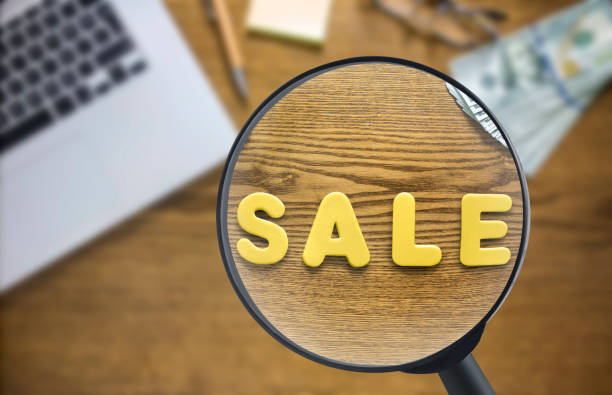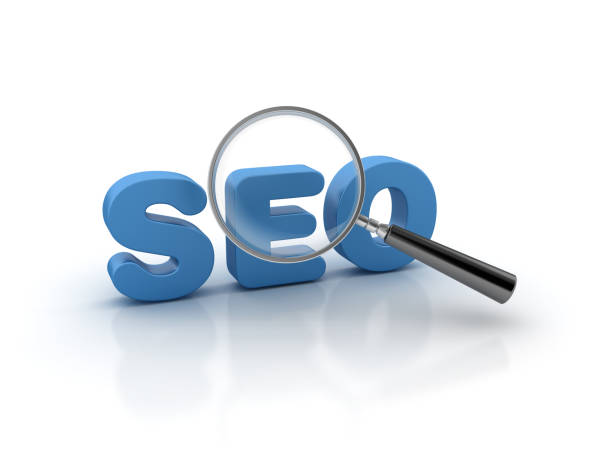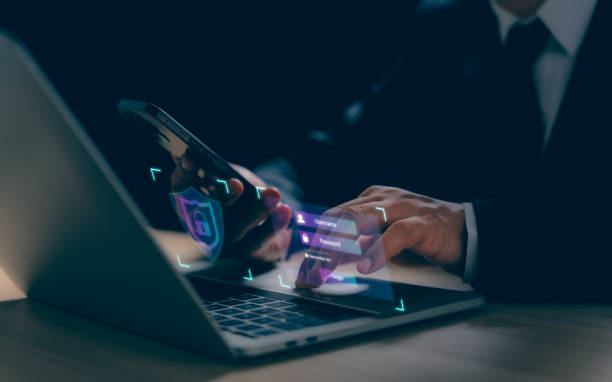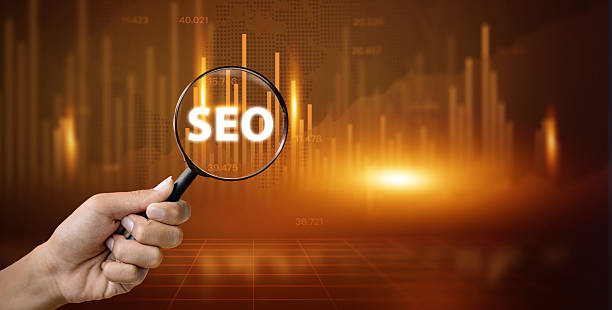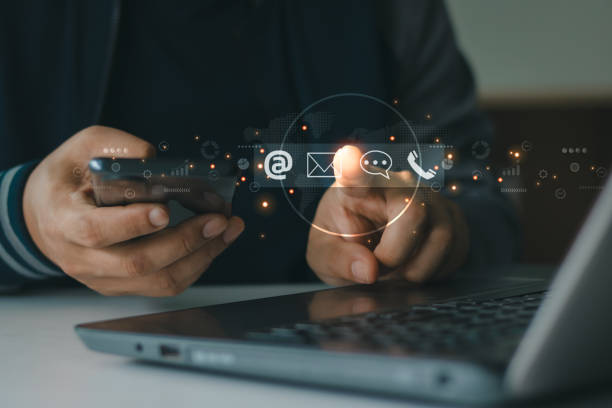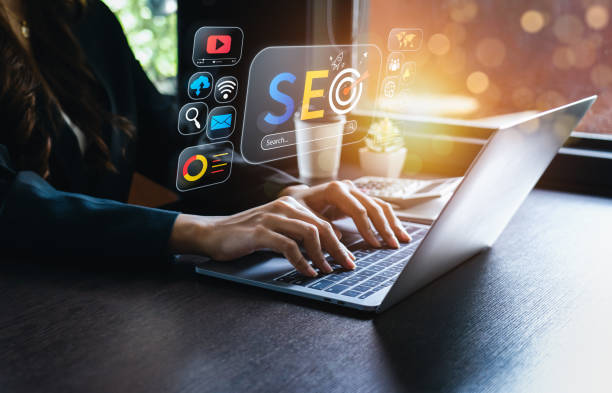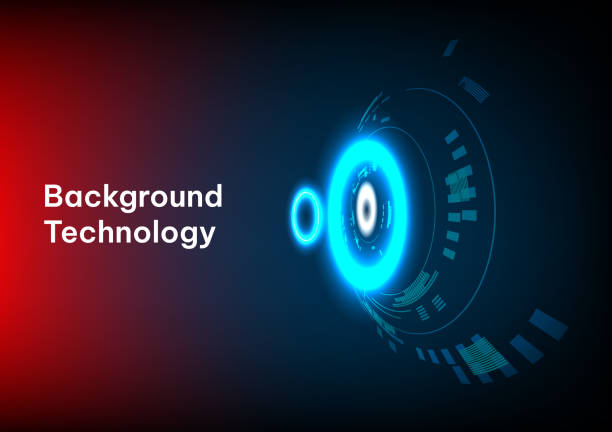What is On-Page SEO and Why Does It Matter?
On-Page SEO is the set of actions you take within your website to improve your site’s ranking in Google’s search results and other search engines.
These actions include optimizing content, using appropriate keywords, improving site structure, and creating a better user experience.
The importance of On-Page SEO lies in the fact that search engines evaluate the quality and relevance of your site’s pages by examining these factors.
The better your site’s On-Page SEO, the more likely you are to rank higher in search results and attract more organic traffic to your site.
For example, if you have an online appliance store, you can improve your site’s On-Page SEO and rank better in search results for keywords like “buy refrigerator” or “washing machine price” by optimizing product descriptions, using high-quality images, and improving page loading speed.
A deep understanding of SEO is crucial for online success.
By understanding this, you can confidently apply On-Page SEO strategies.
On-Page SEO, as a fundamental principle in the world of #DigitalMarketing, helps you optimize your content for search engines and users.
Paying attention to technical and content details in this area can make a significant difference in attracting your target audience.
Did you know that a poorly designed online store can drive away up to 70% of your potential customers? Rasaweb transforms your sales with professional and user-friendly e-commerce website design.
✅ Significant increase in sales and revenue
✅ Full optimization for search engines and mobile
⚡ [Get Free Consultation from Rasaweb]
Keyword Research and Finding the Best Phrases
The first step in On-Page SEO is keyword research.
You need to understand what phrases your audience enters into search engines to look for your products or services.
There are various tools for keyword research, including Google Keyword Planner, Ahrefs, and SEMrush.
Using these tools, you can find keywords related to your business, check their search volume, and assess the level of competition for them.
Click here to preview your posts with PRO themes ››
After finding the right keywords, you need to use them strategically in your site’s content.
This includes using keywords in page titles, meta descriptions, the main text of pages, and alt tags for images.
But be aware that overuse of keywords (Keyword Stuffing) can lead to your site being penalized by Google.
Choosing the right keywords can have a dramatic impact on your site’s ranking.
The goal is to incorporate keywords naturally and fluently into the content.
Also, look for long-tail keywords.
These keywords usually have lower search volume, but they have a higher conversion rate because users know exactly what they are looking for.
For example, instead of the keyword “sports shoes,” use the phrase “buy men’s running shoes in Tehran.”
Optimizing Page Titles and Meta Descriptions
The title tag and meta description are two important elements in On-Page SEO that are displayed in search results.
The page title should contain the main keyword of the page and be attractive and concise to encourage users to click.
The meta description should also be a summary of the page content and convince users that your page answers their question.
The length of the page title should be between 50 and 60 characters, and the length of the meta description should be between 150 and 160 characters.
Use keywords in the title and meta description, but write them naturally and fluently.
Optimizing the title tag and meta description plays a vital role in attracting users’ attention and increasing the click-through rate (CTR).
These elements are the first thing users see when searching on Google.
On-Page SEO helps optimize your page title and meta descriptions to attract more audiences and increase site rankings.
Make sure these elements are attractive, relevant, and contain the appropriate keywords.
Click here to preview your posts with PRO themes ››
| Feature | Description |
|---|---|
| Page Title Length | Between 50 and 60 characters |
| Meta Description Length | Between 150 and 160 characters |
| Content | Contains the keyword and is attractive and concise |
Optimizing Page Content
Your page content should be high-quality, relevant, and valuable.
Your content should answer users’ questions and needs and encourage them to stay on your site.
Use keywords naturally and fluently in your content, but avoid Keyword Stuffing.
Update your content regularly and add new and fresh content to your site.
Use images, videos, and other multimedia elements to make your content more engaging.
Content optimization is key to attracting and retaining audiences on your site.
High-quality content is not only useful for users but also shows search engines that your site is credible and valuable.
To improve #OnPageSEO, try to optimize your content by using relevant keywords, proper structuring, and providing accurate and useful information.
This helps search engines better understand your content and give it a higher ranking in search results.
On-Page SEO is very important for making content better.
Research shows that 80% of customers trust companies with professional websites more. Does your current website inspire this trust?
With Rasaweb’s corporate website design services, solve the problem of customer distrust and a weak online image forever!
✅ Create a professional image and increase customer trust
✅ Attract more sales leads and grow your business
⚡ Get a free consultation
Improving Site Structure and Internal Linking
Your site structure should be logical and user-friendly.
Users should be able to easily navigate your site and access the information they need.
Use a proper internal linking structure to connect the different pages of your site to each other.
This helps search engines better understand your site structure and improve your page rankings.
On-Page SEO helps improve your site structure and internal linking to provide a better user experience for your audience and improve your site’s ranking in search engines.
Use clear menus and logical categories and make sure each page is easily accessible from other pages.
Internal linking is an effective way to direct users and search engines to important pages on your site.
Use relevant and descriptive anchor text for your internal links.
Anchor text is the text that is attached to a link.
Instead of using generic anchor text such as “click here,” use anchor text that is relevant to the content of the destination page.
This helps search engines understand what the destination page is about.
Optimizing Images and Videos
Images and videos can make your site’s content more engaging and informative.
But you need to optimize them correctly to rank well in search results as well.
Use descriptive file names for your images and add alt tags to them.
The alt tag is text that is displayed instead of the image if it cannot be displayed.
Use keywords in your image file name and alt tag.
Reduce the file size of images and videos to increase the loading speed of your site’s pages.
Use the appropriate formats for images and videos.
For example, use the JPEG format for images and the MP4 format for videos.
Optimizing images and videos helps improve site speed and user experience.
Don’t forget On-Page SEO in this regard.
On-Page SEO helps optimize images and videos as a key element in improving your site’s ranking in search engines.
Make sure your images and videos have descriptive file names, appropriate alt tags, and optimized file sizes.
Optimizing Page Loading Speed
Page loading speed is one of the important factors in Google’s ranking of your site.
Users expect your site’s pages to load in a few seconds.
If your site’s pages load slowly, users will leave your site and visit competitor sites.
To increase the loading speed of your site’s pages, you can use various tools such as Google PageSpeed Insights and GTmetrix.
These tools help you identify problems with your site’s loading speed and provide solutions to fix them.
On-Page SEO has a big impact on attracting audiences by improving site loading speed.
Optimizing site speed not only improves user experience but also helps increase your site’s ranking in search results.
On-Page SEO helps optimize your page loading speed as an important factor in improving user experience and site ranking in search engines.
Make sure your images and videos are optimized, use caching, and use a fast and reliable web hosting service.
| Factor | Solution |
|---|---|
| Large Images | Optimize image size and format |
| JavaScript and CSS code | Compress and reduce code size |
| Responsive server | Use CDN and strong hosting |
Using Schema Markup
Schema Markup is code that helps search engines better understand the content of your pages.
By using Schema Markup, you can provide search engines with additional information about your content, such as the author’s name, publication date, product rating, and so on.
This information can be displayed in search results and increase your site’s click-through rate (CTR).
There are different types of Schema Markup that you can use, including Article, Product, Event, LocalBusiness, and so on.
For more information about Schema Markup and how to use it, you can visit the Schema.org website.
Using Schema Markup helps improve search engine understanding of your content.
Your On-Page SEO is strengthened by doing this.
Optimizing Schema Markup helps you provide your site’s information in a structured way to search engines.
By doing this, the chance of your site being seen in search results increases.
To achieve this goal, your On-Page SEO must be done correctly.
Did you know that your company’s website is the first point of contact for 75% of potential customers?
Your website is the face of your brand. With Rasaweb’s corporate website design services, build an online presence that earns customer trust.
✅ Create a professional and lasting image of your brand
✅ Attract target customers and increase online credibility
⚡ Get a free consultation from Rasaweb experts!
Optimizing for Mobile
Today, more than half of internet traffic comes from mobile devices.
Therefore, it is very important that your site is optimized for mobile.
Your site must be responsive, meaning that it should automatically adapt to the screen size of different devices.
Also, your site should load quickly and provide a good user experience on mobile devices.
To check if your site is optimized for mobile, you can use Google’s Mobile-Friendly Test tool.
This tool helps you identify problems with your site’s mobile compatibility and provides solutions to fix them.
Optimizing for mobile is a necessity to attract more audiences and improve your site’s ranking.
On-Page SEO is very important in this section.
On-Page SEO, by optimizing for mobile, including responsive design, high loading speed, and a good user experience on mobile devices, helps improve your site’s ranking in search engines and attract more audiences.
Continuous Review and Update
On-Page SEO is an ongoing process.
You should regularly review your site’s performance and make necessary changes to improve it.
Use various tools such as Google Analytics and Google Search Console to monitor your site traffic, identify the keywords users are using to enter your site, and find problems related to your site’s On-Page SEO.
Search engine algorithms are constantly changing.
Therefore, you should always be aware of the latest changes and update your On-Page SEO strategy based on them.
Continuous SEO review and analysis helps you identify your strengths and weaknesses and continuously improve your strategies.
On-Page SEO is a process that requires constant attention and effort.
To improve On-Page SEO, continuous review and updating of the site is essential.
Analyzing data, monitoring traffic, and updating the site’s content and structure can help improve the site’s ranking in search engines and facilitate attracting more audiences.
Always try to keep up with changes in search engine algorithms.
Frequently Asked Questions
| Question | Answer |
|---|---|
| What is On-Page SEO? | On-page SEO involves optimizing elements that are directly in your control and within your website. The goal is to help search engines better understand the content of the page and improve its ranking. |
| Why is On-Page SEO important? | On-page SEO gives search engines clear signals about page content, improves user experience, and increases the chance of attracting organic traffic. |
| What are the most important on-page SEO factors? | Keywords, title tag, meta description, URL structure, quality content, image optimization, and internal links are among the most important factors. |
| What is the role of the Title Tag in on-page SEO? | The title tag is one of the most important signals for search engines and users that identifies the main topic of the page. It should include the main keyword and be attractive. |
| How important is the Meta Description? | The meta description does not directly affect ranking, but it can improve the click-through rate (CTR) by encouraging users to click. |
| How can we optimize images for on-page SEO? | By using a descriptive file name, appropriate Alt Text containing keywords, compressing to reduce size, and correct dimensions. |
| What is the impact of Internal Links on SEO? | Internal links help search engines discover and index site pages, distribute authority (PageRank) across the site, and improve user navigation. |
| Is page loading speed one of the on-page SEO factors? | Yes, page loading speed is a critical factor in on-page SEO and user experience. Slower pages can lead to higher bounce rates and lower rankings. |
| What are the characteristics of quality content for on-page SEO? | Quality content should be comprehensive, unique, relevant, trustworthy, readable, and fully answer the needs and questions of users. |
| How can keywords be used in content? | Keywords should be used naturally in the title, subheadings, first paragraph, body text, and image alt text. Avoid keyword stuffing. |
And other services of Rasa Web advertising agency in the field of advertising
Smart direct marketing: A combination of creativity and technology to increase site visits by optimizing key pages.
Smart social media: An effective tool to increase sales by using real data.
Smart brand identity: An effective tool to attract customers by using SEO-focused content strategy.
Smart direct marketing: A novel service to increase click-through rates through attractive user interface design.
Smart direct marketing: An effective tool for managing campaigns through attractive user interface design.
And more than hundreds of other services in the field of internet advertising, advertising consulting and organizational solutions
Internet advertising | Advertising strategy | Advertorial
Resources
[object Object],[object Object],[object Object],[object Object]
? Do you need a reliable partner to promote your business in the digital space? Rasaweb Oferin Digital Marketing Agency paves your growth path by providing specialized services including corporate website design, SEO and social media management.
📍 Tehran, Mirdamad Street, next to the Central Bank, Kazerun South Alley, Ramin Alley No. 6


